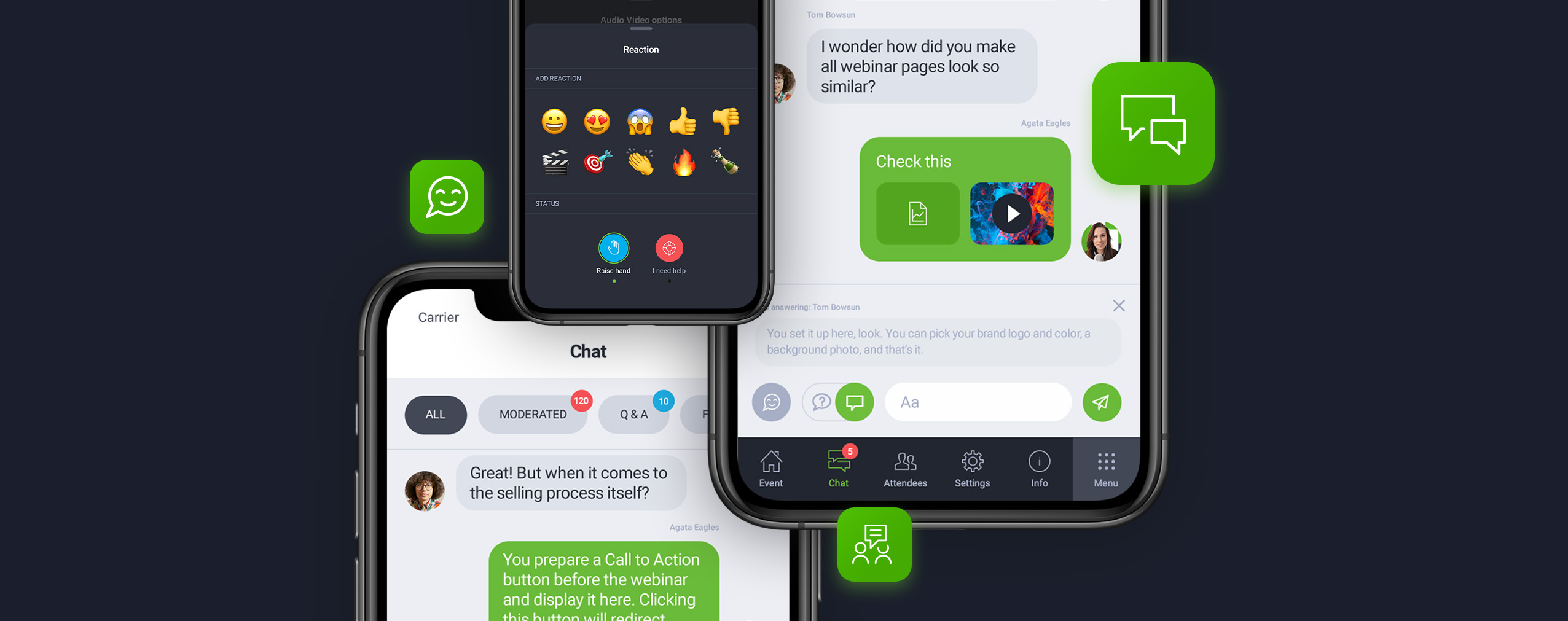Let’s face it, most people are not born orators. In fact, many of us would rather hug a grizzly bear than engage in any form of public speaking, in-person or online. So we totally understand if the thought of delivering an hour-long webinar makes you nervous.
Unfortunately, nervousness often leads to subpar presentations that sound robotic and fail to engage viewers—definitely not what you want during your webinar!
In this article, we’ll discuss five tips you can use to avoid sounding like a robot during your next online seminar. That way your presentations will be well-received and help your business achieve its goals. Sound good? Great, let’s get started.
Table of Contents
How to Avoid Sounding Like a Robot During Your Presentation
If you could choose one word to describe your next webinar presentation, it probably wouldn’t be “robotic”. Sure, “robotic” is better than “disappointing” or “terrible” or “a flaming disaster.” But it’s still not great and should be avoided if at all possible.
Good news: it’s definitely possible, as long as you follow the five tips below:
1. Prepare Yourself
It’s really hard to succeed at anything—business, sports, video games—without a healthy dose of preparation. This is especially true for webinar presentations. If you’re not prepared when you go live, your delivery won’t feel natural and engaging.
Here’s how to properly prepare for your next webinar:
-
Know Your Content: What topic will you cover during your webinar? And do you know that topic like the back of your hand? If not, it’s time to study up. It will be tough to deliver an engaging presentation if you’re not familiar with the subject matter.
-
Understand Your Audience: It’s important to know your audience, too. What do they want out of your webinar? What questions do you think they’ll ask during your Q&A session? When you know your audience, you can prepare relevant content for them.
-
Learn Your Webinar Software: Finally, make sure you know how to use your webinar software of choice. This will help prevent technical issues and give you one less thing to worry about during your presentation.
Ultimately, all three of these tips give you one thing: confidence. A confident speaker is a natural speaker who knows how to avoid sounding like a robot.
2. Practice Your Presentation
Take your preparation game to the next level and practice your presentation before you give it live. This will ensure you have a good handle on your material and won’t have to completely rely on a script. Scripts are terribly unengaging, which we’ll cover in the next section.
If possible, practice in front of a mirror so that you can see yourself while speaking. Better yet, use your phone, a camera, or your computer’s webcam to record your practice sessions. When you roll the tape back, you’ll be able to assess your delivery.
Is it smooth and easy to understand? Are you fidgeting with your hands the whole time? And how’s your voice? If it sounds robotic, keep practicing.
There is one caveat to this tip: don’t practice your presentation word for word. You don’t want to memorize your speech as this is an easy way to become the robot you’re trying to avoid. Instead, just get comfortable with the material so you feel confident when you go live.
3. Commit to Spontaneity
As mentioned above, you do NOT want to script your entire webinar. The easiest way to sound like a robot is to pre-write your presentation, then read it to your audience verbatim.
We understand the temptation. You’re nervous about speaking in front of other people. You don’t want to forget an important piece of information. And you dread moments of “dead air.” A crisp, pre-written speech seems like the perfect solution for this scenario.
The problem is this approach doesn’t engage audiences because it doesn’t feel natural. If you want to avoid sounding like a robot, you need to add a dash of spontaneity to your webinars.
Here are a few ideas you can use to succeed in this area:
-
Use Notes: We don’t suggest scripting your entire presentation. But brief notes are definitely recommended. They’ll help you remember the main points of your speech and keep you on track, without turning you into a mindless robot.
-
Accept Audience Questions: One way to breathe life into your webinars and make them more spontaneous is to answer questions from your audience. Doing so will give your presentations the unscripted, authentic feel that viewers love.
-
Take Advantage of Your Webinar Software: Webinar solutions like ClickMeeting allow users to engage audiences via polls and surveys, chat boxes, etc. You can use these tools to break up the flow of your presentations and avoid robotic events.
Spontaneity may sound scary. But if you’re prepared for your webinar and truly know your subject matter, you shouldn’t need to script your entire event.
4. Modulate Your Voice
Think about the last time you called your internet provider. How did you know you were talking to a robot and not a real human being? The tone of voice, right?
Robots aren’t able to modulate their “voices” and infuse them with emotions like people can—at least not yet. So if you want to avoid sounding like a robot during your next webinar, work to vary the volume, pace, and pitch of your voice when you speak.
For example, you could talk a little faster and raise your voice when you’re presenting a piece of especially exciting information. You could also dip into a lower register and speak with slow, measured words when you mention an important fact that you really want to sink in.
Modulating your voice will do more than just make your presentations less robotic. It will also stir up emotions in your audience—emotions you can use to your advantage.
Think about the way you want your audience to feel when you deliver different pieces of information. Then choose a speech pattern to match. In general, quick speech creates excitement, pauses between words build anticipation, louder sentences breed confidence, and quieter phrases make audiences pay closer attention.
Just don’t take this tip overboard. You don’t want to modulate your voice in a set pattern as this will sound robotic, too. Aim for a natural delivery at all times.
5. Use Familiar Phrases
Lastly, avoid sounding like a robot during webinars by using words, phrases, and terms that are familiar to your unique audience. This is another reason why it’s so important to know who you’re speaking to, like we mentioned in tip number one.
When you know your audience, you’ll know the speech they use and can incorporate it into your presentation. For example, if your webinar attendees are new to your industry, you’ll want to avoid using a lot of jargon and industry-specific terms.
If your audience is familiar with your company and the products it sells, you can talk about your offerings in a more educated and in-depth way.
Catering your speech to your viewers will make your webinars feel more personable and natural, i.e. not robotic. After all, a robot wouldn’t care enough to change its speech patterns, right? We see robots as cold, emotionless creations. Be human.
Host Better Webinars
Just because you’re not a natural orator doesn’t mean your webinar presentations need to be uninspiring and robotic. By preparing, practicing, committing to spontaneity, modulating your voice, and using familiar phrases, you can avoid sounding like a robot.
The only question left is what webinar platform will you use to deliver your highly engaging, completely non-robotic presentations? We suggest ClickMeeting.
ClickMeeting is a popular webinar tool that’s used by thousands of people around the world. It includes industry-leading features like screen sharing, polls and surveys, moderated chat, custom branding, social media streaming, webinar recording, and analytics.
Try ClickMeeting for free for 14-days—no credit card required, no strings attached.








